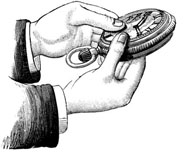
Did William McKinley Die a Catholic?
A PRIEST AT HIS DEATHBED
On September 6, 1901, at the Pan-American Exposition in Buffalo, New York, an anarchist shot President William McKinley at close range. The president was rushed to the Exposition hospital, and later to the home of Exposition official John Milburn. Soon after, Captain Edward Vattmann, 61, the Catholic chaplain at Fort Sheridan, Illinois, received an urgent message to travel to Buffalo, his presence requested by McKinley, who lay in one of Milburn’s bedrooms, wounded by the assassin’s bullet.
Fr. Vattmann immediately took a train from Chicago. If it seems odd that McKinley, known to be a devout Methodist, sent for a Catholic priest, it did not to those present at his bedside, for it was well known that he and Vattmann enjoyed a decades-long friendship.
McKinley was expected to live. As late as September 9, The New York Times reported that there was “great hope” for the president. But he soon succumbed to his wounds and died on September 14. Learning of his friend’s death, Fr. Vattmann reportedly told others, “They can do what they want with his body. I have taken care of his soul.”
Edward Vattmann was a seminarian in Prussia in 1863 when he was recruited to serve the vast number of German Catholic immigrants arriving in the midwestern United States. He reached America in 1864, at age 24, completed his education at St. Francis Seminary in Milwaukee, Wisconsin, and was ordained in St. Louis, Missouri, on Easter Sunday in 1865. Two years later, he was sent to Cleveland, Ohio, where he spent the next 23 years before joining the U.S. Army in 1890. His first assignment in Ohio was at St. Michael the Archangel Church in Findley. While there, he began a mission in the nearby town of Fostoria, where Charles Foster Sr., a local Protestant businessman, allowed him to use the parlor of his home for Sunday Mass. There Vattmann met Foster’s son Charles Jr., 42, a politician elected in 1870 to his first of four terms in Congress (he would later be elected governor).
It was through the Fosters that Fr. Vattmann met McKinley in 1878. By then he had been transferred to SS Philip and James Church in Canal Fulton, near McKinley’s hometown of Canton. McKinley, then 35, was serving his first term in Congress. Over the years he would often visit Fr. Vattmann. The record in the parish archives reads: “When McKinley visited his friend (industrialist and U.S. Senator) Mark Hanna in Cleveland, he stopped on the way back to visit his friend Father Vattmann. He used to spend quiet weekends at the rectory when he wanted to get away from the pressure of official business in Washington. He purchased a bed on which he slept on such occasions.”
You May Also Enjoy
The proud and talented scholar threw herself gladly, ecstatically at His feet, He of the Cross, He whose Cross had become her cross.
A history of British “literary converts” is a story of spiritual inspiration over the course of the “age of unbelief” that constitutes the full run of the 20th century.
The usual categories we summon to describe people, to explain their motives and purposes, can be rendered utterly inadequate by particular moments of crisis.

